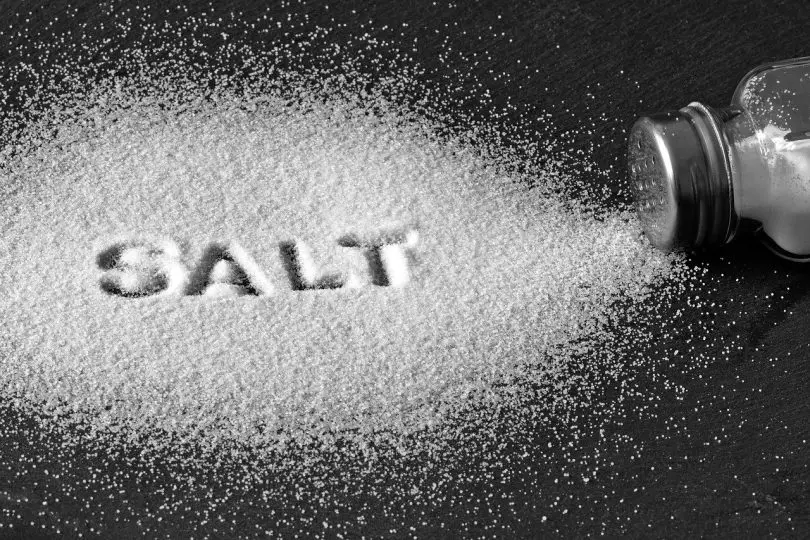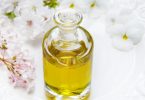Have you ever wondered how to achieve smooth and glowing skin without spending a fortune on expensive beauty products? Look no further than your kitchen pantry.
Salt, yes, the same humble ingredient used to enhance the flavor of your meals, can also act as a natural scrubbing agent to exfoliate and rejuvenate your skin.
But why stop at just your face? In this discussion, we will explore the various benefits of using salt for exfoliation, different types of salt suitable for scrubbing, and how to incorporate salt scrubs into your skincare routine.
Get ready to uncover the secrets of salt and unlock a whole new level of radiance for your skin.
Benefits of Using Salt for Exfoliation
Using salt as an exfoliant offers numerous benefits for your skin. Not only is it affordable and easily accessible, but it also provides effective results. When you scrub your skin with salt, it helps to remove dead skin cells, revealing a smoother and brighter complexion. The granular texture of salt works as a natural exfoliator, gently sloughing away dirt and impurities from the surface of your skin. This deep cleansing action helps to unclog pores and reduce the appearance of blackheads and whiteheads.
Furthermore, salt exfoliation stimulates blood circulation, promoting healthy skin cell turnover. It encourages the production of collagen, which is essential for maintaining skin elasticity and youthfulness. Regularly exfoliating with salt can also help to even out skin tone and improve the appearance of scars and blemishes.
Additionally, salt has natural antiseptic properties that can help to combat acne-causing bacteria. It can reduce inflammation and soothe skin irritations, making it suitable for those with sensitive or acne-prone skin. By incorporating salt exfoliation into your skincare routine, you can achieve a smoother, clearer, and more radiant complexion.
Different Types of Salt for Scrubbing
To explore the different types of salt that can be used for scrubbing, consider their unique properties and benefits for your skin. There are several options to choose from, each with its own distinct characteristics.
One popular choice is sea salt, which is known for its high mineral content. Sea salt has larger granules compared to table salt, making it an excellent exfoliator for removing dead skin cells and unclogging pores. Additionally, sea salt helps to balance the skin’s natural oils and can improve overall skin texture.
Himalayan salt, on the other hand, is a pink-colored salt that’s rich in minerals and trace elements. It’s believed to have detoxifying properties and can help to cleanse and purify the skin. Himalayan salt is also known for its soothing effect, making it ideal for sensitive skin types.
Epsom salt, also known as magnesium sulfate, is another popular option. It has a fine texture and is highly soluble in water, making it perfect for creating salt scrubs and bath salts. Epsom salt is known for its ability to relieve muscle aches and pains, making it a great choice for a relaxing and rejuvenating scrub.
When choosing a salt for scrubbing, consider your skin type and specific needs. Experimenting with different types of salt can help you find the one that works best for you, leaving your skin feeling refreshed and revitalized.
How to Use Salt as a Facial Scrub
Start by wetting your face with warm water. This will help to open up your pores and prepare your skin for the scrub.
Take a small amount of salt and mix it with a gentle cleanser or a few drops of water to form a paste.
Gently apply the salt scrub to your face, avoiding the delicate eye area. Use small, circular motions to massage the scrub into your skin. Be sure to focus on areas that are prone to dryness or congestion, such as the forehead, nose, and chin. Take care not to scrub too harshly, as this can cause irritation.
After scrubbing for about a minute, rinse your face thoroughly with warm water.
Pat your skin dry with a clean towel and follow up with your regular moisturizer.
It’s important to note that you should only use a salt scrub on your face once or twice a week, as excessive exfoliation can strip away the skin’s natural oils.
Salt Scrubs for Smoother Hands and Feet
Now let’s explore how salt scrubs can be used to achieve smoother hands and feet.
Salt scrubs aren’t only great for exfoliating your skin, but they also provide numerous benefits for your hands and feet. When used as a scrub, salt helps remove dead skin cells and reveal smoother, softer skin underneath. The coarse texture of salt helps to slough off rough patches, calluses, and dry skin, leaving your hands and feet feeling rejuvenated.
Additionally, salt scrubs can help improve circulation and promote healthy skin cell turnover. To use a salt scrub for your hands and feet, simply mix a small amount of salt with your favorite carrier oil, such as olive oil or coconut oil, and massage it onto your skin in gentle, circular motions. Rinse off with warm water and pat dry.
Finish off with a moisturizer to lock in hydration. Incorporating salt scrubs into your skincare routine can help you achieve smoother, more supple hands and feet. So go ahead and give it a try!
DIY Salt Scrub Recipes for Body Exfoliation
If you’re looking for an effective and affordable way to exfoliate your body, DIY salt scrub recipes are the perfect solution. Not only are they simple to make, but they also offer numerous benefits for your skin.
One popular recipe involves combining salt with olive oil and a few drops of your favorite essential oil. The salt acts as a natural exfoliant, sloughing away dead skin cells and leaving your skin feeling smooth and refreshed. The olive oil helps to moisturize and nourish your skin, while the essential oil adds a delightful fragrance. To make this scrub, simply mix the ingredients together in a bowl and gently massage the mixture onto your body in circular motions. Rinse off with warm water and pat dry.
Another great salt scrub recipe involves combining salt with coconut oil and a teaspoon of honey. This combination helps to hydrate your skin and promote cell regeneration. Simply mix the ingredients together and apply the scrub to your body, focusing on areas that need extra exfoliation. Rinse off thoroughly and enjoy the softness and glow of your newly exfoliated skin.
With these DIY salt scrub recipes, you can achieve smooth and radiant skin without breaking the bank.
Tips for Maximizing the Benefits of Salt Scrubs
To enhance the benefits of salt scrubs, consider incorporating additional natural ingredients for added nourishment and exfoliation. By combining salt with other beneficial ingredients, you can create a powerful scrub that will leave your skin feeling refreshed and rejuvenated.
One great ingredient to add to your salt scrub is coconut oil. This natural oil is rich in antioxidants and has moisturizing properties that can help soothe and hydrate your skin. Simply mix a tablespoon of coconut oil with the salt to create a nourishing scrub that will leave your skin feeling soft and supple.
Another ingredient to consider is honey. Honey is known for its antibacterial properties and can help to cleanse and nourish your skin. To incorporate honey into your salt scrub, mix a tablespoon of honey with the salt to create a gentle exfoliating treatment.
You can also add essential oils to your salt scrub for added benefits. Lavender oil, for example, is known for its calming properties and can help to relax your mind and body while you exfoliate. Simply add a few drops of your favorite essential oil to the salt scrub mixture to create a soothing and aromatic experience.
Incorporating these additional natural ingredients into your salt scrub won’t only enhance its exfoliating properties but also provide added nourishment and relaxation for your skin. Give it a try and enjoy the benefits of a revitalizing salt scrub.
Precautions and Considerations When Using Salt as a Scrubbing Agent
Using salt as a scrubbing agent requires taking certain precautions and considerations to ensure the best results for your skin.
First, it’s important to remember that salt scrubs can be quite abrasive, so it’s crucial to avoid using them on sensitive or broken skin. If you have any cuts, wounds, or sunburns, it’s best to wait until they’re fully healed before using a salt scrub.
Additionally, be mindful of the amount of pressure you apply while scrubbing. Too much pressure can cause irritation and damage to your skin. It’s recommended to use gentle, circular motions and let the salt do the work.
Furthermore, it’s essential to moisturize your skin after using a salt scrub. While salt scrubs can effectively exfoliate and remove dead skin cells, they can also strip away natural oils, leaving your skin dry and dehydrated. Applying a moisturizer after using a salt scrub will help replenish moisture and maintain the health of your skin.
Lastly, always conduct a patch test before using a salt scrub for the first time, especially if you have sensitive skin or allergies. This will help you determine if you have any adverse reactions to the scrub.







